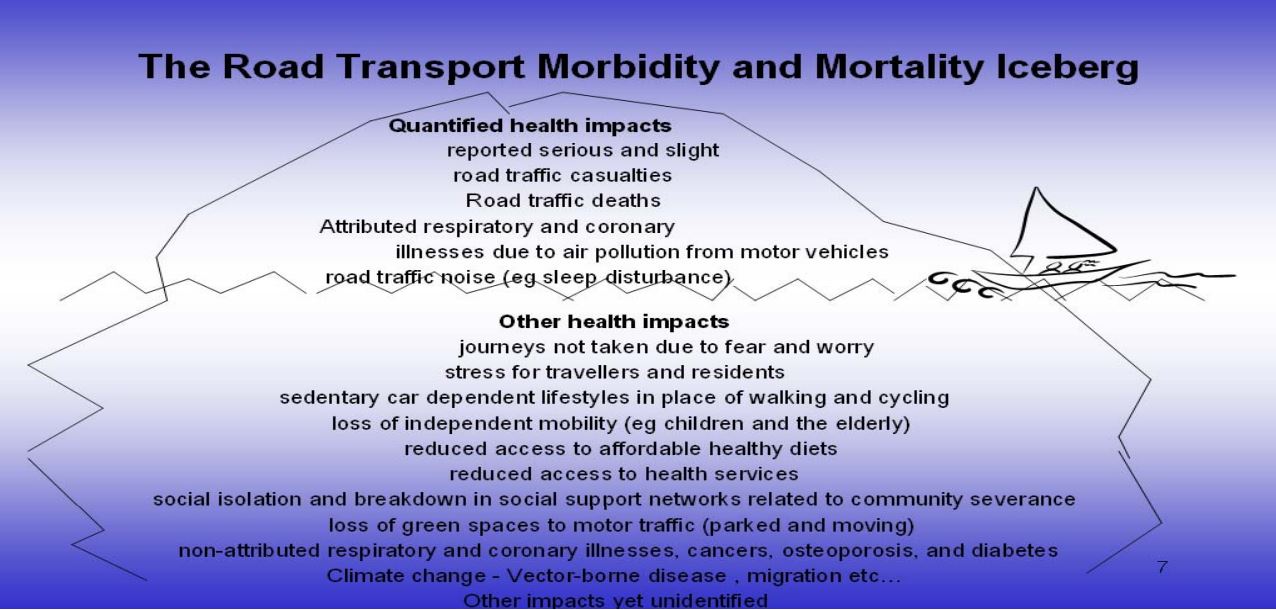29: Illness arising from Road Transport
Dr Adrian Davis
Top line: Transport strategy and guidance requires a greater understanding of the range of health impacts arising from transport in order to deliver a sustainable transport system. The public health evidence base can help inform both national and local strategies.
Delivering a Sustainable Transport System (DaSTS) is the Department for Transport’s overarching road transport strategy. ‘To contribute to better safety security and health and longer life-expectancy by reducing the risk of death, injury or illness arising from transport and by promoting travel modes that are beneficial to health’ is one of its five goals. In addition, Local Transport Plan 3 Guidance states that ‘Undertaking a Health Impact Assessment should provide an evidence base to help the decision making process in developing an effective LTP, and to mitigate the negative effects on health and well-being (whether physical and/or mental health)’.1 These requirements beg the question as to ‘what the health impacts of road transport are which lead to illness?’
Historically, the main concern about health impacts of road transport has been road traffic casualties since these are acute. The contribution of traffic to noise and air pollution has become an increasing concern with rapid motorisation from the 1960s. Since the 1990s considerable public health research has revealed that many health impacts are subtle and chronic, not the least of which are the long term effects of physical activity decline arising from the substitution from walking, cycling and public transport to car use. This includes an evidence base linking car use with increased obesity risk.2 The British Medical Association’s report Road Transport and Health set out graphically a way of seeing the full range of health impacts through a Road Transport Morbidity and Mortality Iceberg.3 Considering impacts both above and below the ‘water-line’ the evidence base indicates that there is an unacceptably high disease burden as a result of current transport policy.4

1 http://www.dft.gov.uk/pgr/regional/ltp/guidance/localtransportsplans/ accessed 24th July 2009.
2 See Essential Evidence No 7 http://www.bristol.gov.uk/ccm/content/Transport-Streets/Walking-Cycling/cycling-inbristol/essential-evidence/essential-evidence.en
3 British Medical Association, 1997 Road Transport and Health. London: BMA. 4 Woodcock et al, 2007 Energy and Transport, The Lancet, 22;370 (9592):1078-88
29: Illness arising from Road Transport Download pdf PDF approximately 115.2 K